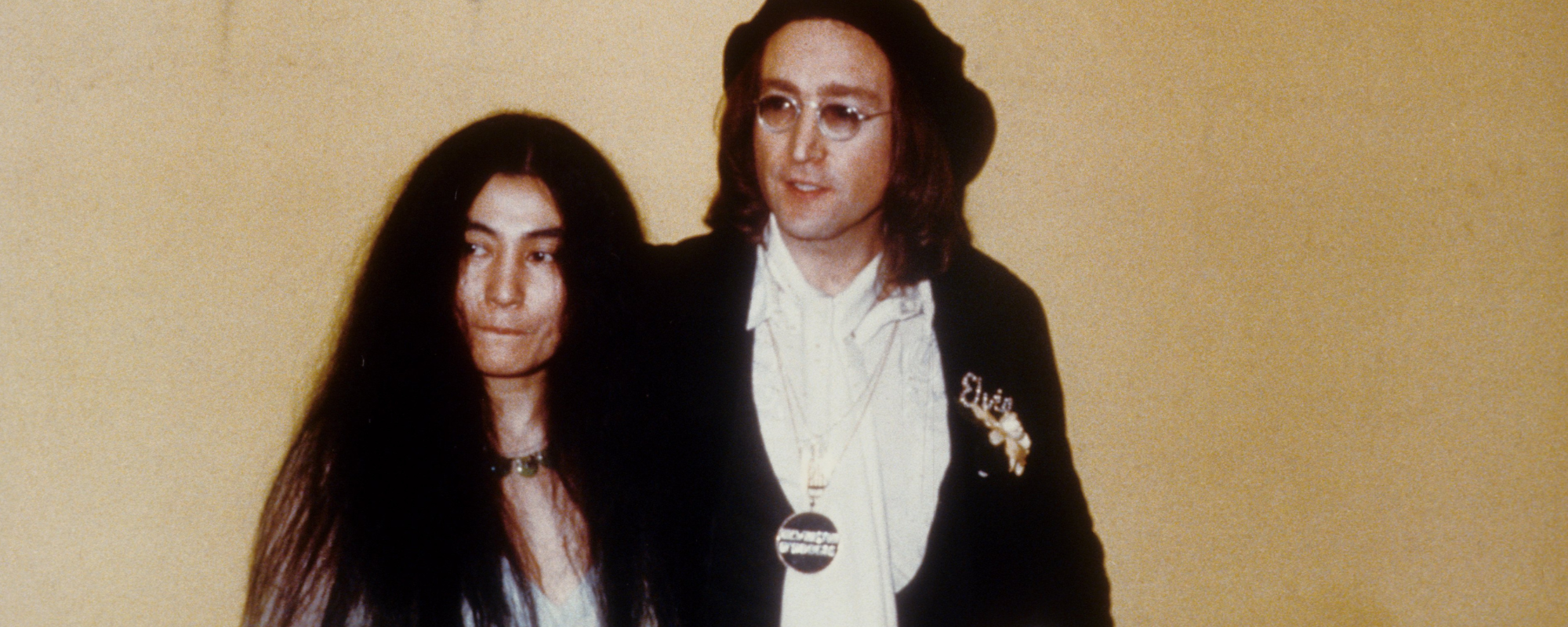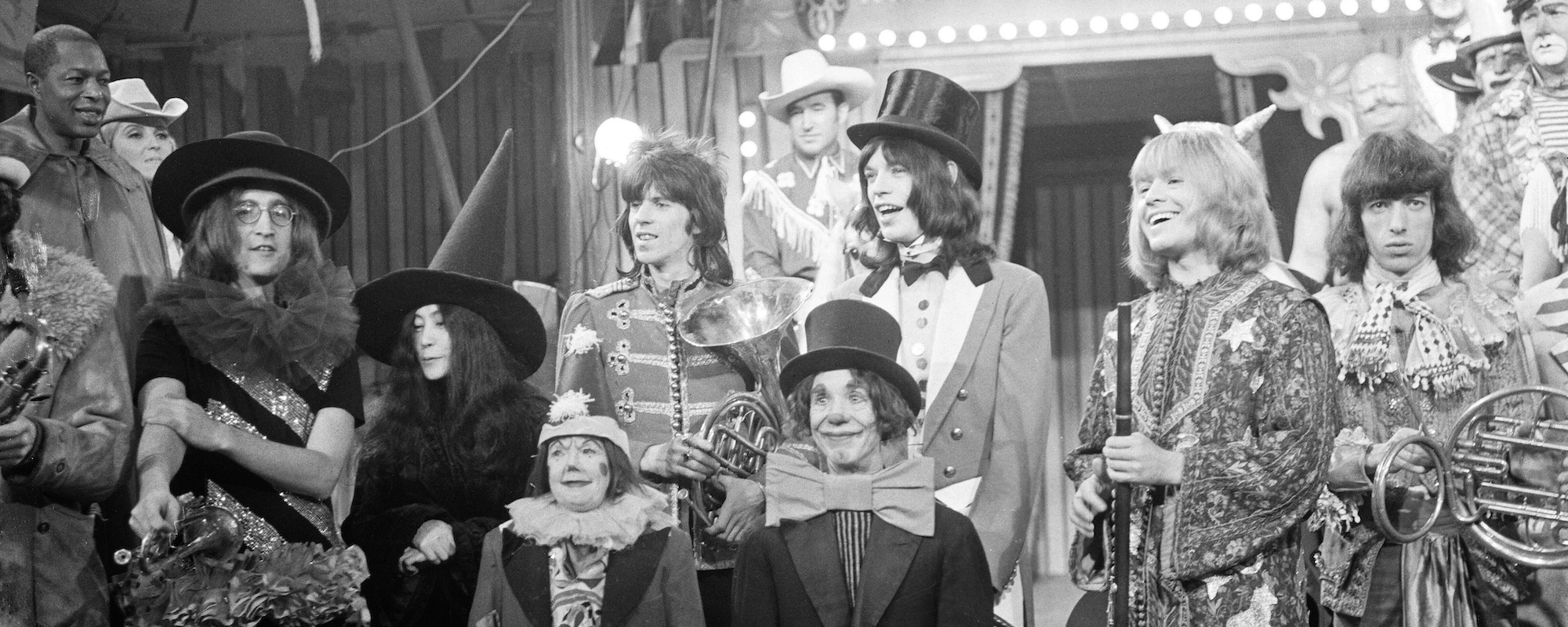Well in 1941, a happy father had a son
And by 1944, the father walked right out the door
And in ’45, the mom and son were still alive
But who could tell in ’46 if the two were to survive?
Videos by American Songwriter
His autobiographical “1941” sets up the (initially sad) story perfectly. Harry Nilsson was born in Brooklyn, New York, and was told his father died in World War II; he found out only much later his father had actually abandoned him and his mother and moved to Florida.
At 15, feeling the financial strain he was putting on his family, Nilsson left home and headed for Southern California. He landed a job working overnight at a bank, which allowed him to spend his days writing songs. In 1967, he played a few tunes for composer and arranger Perry Botkin Jr., who offered him a publishing deal right then and there.
1. The Monkees Changed Everything
One of Nilsson’s songs, “Cuddly Toy,” made its way to Davy Jones of The Monkees, who chose to record it for their Pisces, Aquarius, Capricorn, and Jones album. Drummer Micky Dolenz, who would become one of Nilsson’s closest pals, relayed the story years later: “When Davy Jones said he would record ‘Cuddly Toy,’ the music publisher that was there, Lester Sill was the guy’s name…[they] walked outside in the parking lot, and he [told Harry], ‘You can quit the bank.’” The placement allowed Nilsson to turn his full-time attention toward songwriting.
2. He Wrote One of His Biggest Hits to a Telephone Busy Signal
One day, Nilsson called someone whose line was otherwise engaged. The drone of the beeping busy signal inspired the song “One” (of One is the loneliest number that you’ll ever do fame). It became the lead single from his sophomore album, Aerial Ballet, and while it failed to chart, it went on to become a massive hit for Three Dog Night a year later.
3. The Beatles Changed Everything, Again
Beatles publicist Derek Taylor became a big fan of Nilsson’s debut album, Pandemonium Shadow Show. He got multiple copies of the album and gave them to all of his friends—including the Fab Four. He didn’t have designs on representing the singer; he just wanted to share his excitement about this impressive new album, which featured a wildly inventive version of The Beatles’ “You Can’t Do That” that name-checked some 20-odd other Beatles songs (you have to hear it to believe it).
Nilsson’s phone rang at 5 a.m. one morning. It was John Lennon telling him how much he enjoyed the album and that he had been listening to it for 36 hours straight. The following morning, the phone rang again. This time, it was Paul McCartney with similar words of encouragement.
When The Beatles had a press conference to announce the launch of their new company, Apple Corp., they were asked about their influences, and who some of their favorite new groups were. Lennon said, “Well, everybody’s records influence all the minds, you know, at once. Everything influences everything. Nilsson’s my favorite group.”
[RELATED: 7 Songs You Didn’t Know Harry Nilsson Wrote for Other Artists]
That last sentence did the trick—the music industry would soon clamor to work with John Lennon’s favorite “group.” The Beatles asked Nilsson to visit them in the studio at Abbey Road, to boot. Nilsson’s status as a legitimate artist worthy of The Beatles’ company worked wonders.
4. One of His Two Biggest Hits Almost Didn’t Happen
The producers of the movie Midnight Cowboy reached out to Nilsson to write a song for their upcoming project. They were already using Nilsson’s cover of Fred Neil’s “Everybody’s Talkin’” as a temporary placeholder, so he composed “I Guess the Lord Must Be in New York City” and recorded it in a similar style. Bob Dylan submitted “Lay Lady Lay” for consideration, too, and Joni Mitchell was also approached about submitting a song.
However, the producers had become so attached to “Everybody’s Talkin’” that they dismissed the other submissions (including Nilsson’s) and kept the Neil cover in the final cut. Nilsson lamented that his own song was rejected, but was consoled somewhat when the movie went on to win the Oscar for Best Picture and the track won Nilsson the Grammy for Best Male Contemporary Vocal Performance.
5. The Second of This Master Songwriter’s Two Big Hits Was a Cover, Too
Nilsson heard “Without You” by Beatles acolytes Badfinger and decided to record it himself. It became the highest-charting song of his career. His soaring, pleading vocal performance was awe-inspiring enough to win him another Grammy, for Best Male Pop Vocal Performance. The song was also nominated for Record of the Year, and the album it appeared on, Nilsson Schmilsson, went up for Album of the Year.
While these accolades certainly confirmed Nilsson to be a consummate artist, the fact that the prolific songwriter never had a huge hit with one of his own songs, under his own name, bothered him for the rest of his days (and continues to bother Harryheads everywhere—Nilsson still commands a devoted worldwide fanbase).
6. Nilsson Never—Like, Never—Performed Live
Even though he was enjoying significant success on the charts and at glitzy awards shows, Nilsson could never bring himself to perform concerts. Stage fright and bad experiences onstage in his youth led him to avoid even one-off shows, let alone touring. He was eventually talked into several television appearances that did not involve an audience, but for the most part, his career consisted of virtuosic vocal and instrumental performances in the recording studio exclusively.
7. John Lennon Produced Nilsson, and Even Kind of Managed Him
John Lennon was producing an album for Nilsson in L.A. that would be called Pussy Cats when released in 1974. (This was the album whose recording sessions led to the shredding of Nilsson’s vocal cords after his attempts to impress his producer and hero at the mic. Nilsson’s gorgeous, formerly-3.5-octave voice would never be the same.)
During Pussy Cats‘ recording, it had come time for Nilsson’s record deal to expire. He’d been trying on his own for some time to get RCA to negotiate with no luck. Finally, Lennon and Nilsson decided to wobble into RCA Records’ offices in person (after another night of revelry, of course), and the ex-Beatle’s mere presence secured an immediate meeting with the record company president.
Nilsson was given a multi-million-dollar deal on the spot after Lennon insinuated he might be interested in signing with the label, too, if Nilsson were retained. Lennon’s closing argument was to point out that Nilsson was one of only two true artists RCA had ever rostered. As far as the most famous musician on the planet was concerned, they’d had Harry Nilsson, they’d had Elvis Presley, and that was it.
OK, OK, You Want to Know About the Dead Celebs in Harry’s Bed, We Get It
Nilsson’s partying is indeed the stuff of sordid legend. Stories about hell-raising with his “Hollywood Vampires” drinking buddies Ringo Starr, Keith Moon, Alice Cooper, The Monkees’ Dolenz, and John Lennon (especially during Lennon’s infamous “Lost Weekend” period) endure to this day.
And yes, it’s true: in 1974, “Mama” Cass Elliott of The Mamas & The Papas was found dead in one of the bedrooms of Nilsson’s London apartment. He’d let the singer stay in his flat while he was out of the country. And the cause of death was heart failure, by the way, not choking on food as legend insensitively had it.
Then, four years later, Nilsson’s great buddy and frequent partner in crime, Who drummer Keith Moon, passed away in the same room as Mama Cass. Nilsson had again lent out his abode while he was traveling. This time the cause was a drug overdose. Nilsson, devastated over the loss of yet another friend in his home, sold the apartment to Moon’s bandmate Pete Townshend.
Photo by Michael Ochs Archives/Getty Images













Leave a Reply
Only members can comment. Become a member. Already a member? Log in.